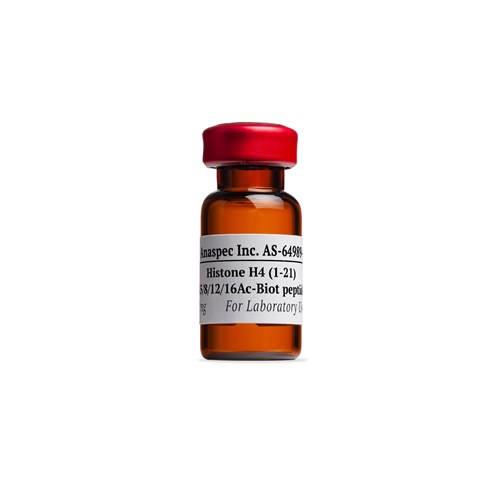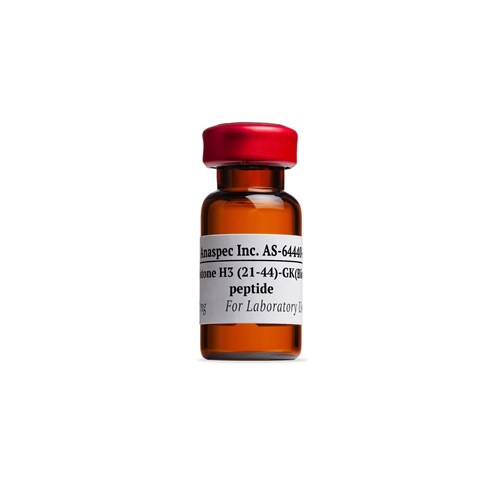[Lys(Me1)36]-Histone H3 (26-46)-K(Biotin) - 1 mg
- Cat.Number : AS-64602-1
- Manufacturer Ref. :
-
Availability :
In stock
Alternative choices
This peptide is a synthetic peptide corresponding to amino acids 26 to 46 of Schizosaccharomyces octosporus histone H3. It is also monomethylated at lysine-36, followed by a biotinylated lysine. The methylation of histone H3 at lysine 36 (K36) has recently been shown to be associated with RNA polymerase II (Pol II) elongation in Saccharomyces cerevisiae. Histone methylation also plays a key role in the regulation of chromatin structure and function. Provided at >95% peptide purity, this peptide was dissolved in distilled water at 1 mg/ml and re-lyophilized to powder form.
Specifications
| Chemistry | |
| Sequence one letter code |
|
|---|---|
| Sequence three letter code |
|
| Molecular Mass/ Weight |
|
| Modification | |
| Conjugation type |
|
| Modification Name | |
| Conjugation |
|
| Quantity & Purity | |
| Purity |
|
| Storage & stability | |
| Form |
|
| Storage Conditions |
|
| Activity | |
| Biomarker Target | |
| Research Area | |
| Sub-category Research Area | |
| Usage |
|
| Source | |
| Source / Species |
|
| Codes | |
| Code Nacres |
|
You may also be interested in the following product(s)



Citations
Selective recognition of H3.1K36 dimethylation/H4K16 acetylation facilitates the regulation of all-trans-retinoic acid (ATRA)-responsive genes by putative chromatin reader ZMYND8
J. Biol. Chem. . 2015 Dec 11 ; 291(6) 2664 | DOI : 10.1074/jbc.M115.679985
- S. Adhikary
- et al
